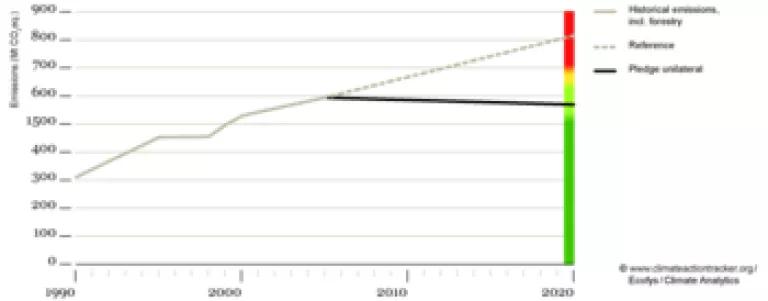
By a vote of 148-0 South Korean lawmakers have just approved a national emissions trading program to reduce the global warming pollution from its largest sectors by 2015. South Korea is the world’s 8th largest emitter of carbon pollution from fossil fuel burning so this is an important signal from one of the world’s largest players. This program would mark an important step in South Korea following through on the commitment it made in Copenhagen to cut its global warming pollution to 4 percent below 2005 levels. This announcement follows on the heels of the passage of national global warming legislation in Mexico.
The legislation is set to go into effect in 2015 and would cap the carbon pollution from power plants, steel plants, ship makers, and large universities. The final details are still to be worked out, but the latest draft regulations would:
- cover around 60 percent of the country's global warming pollution by requiring limits on all facilities that produce more than 25,000 tons of carbon dioxide a year – around 500 facilities will be covered by the program;
- establish a penalty for non-compliance at three times the prevailing market price with a maximum of around $89 per ton; and
- give 95 percent of the allowances away for free in the first three years with some trade-oriented industries received a full 100 percent. This is an increase from 90 percent which was in earlier versions of the regulations.
While South Korean industry is reportedly strongly opposed to the legislation (according to Reuters and Bloomberg), the South Korean government forged ahead with the program anyway. This program will help spur more efficiency in the country and greater deployment of renewable energy. Wind, solar, and geothermal account for less than one percent of the total electricity produced in the country – ranking them number 15 out of all the G20 countries. In fact, South Korea has seen a recent dip in its total clean energy investments from their high in 2007 of $1.36 billion in 2007 to zero dollars in the first quarter of 2012, according to Bloomberg New Energy Finance data.
As Yang Soogil, the Chairman of the Presidential Committee on Green Growth, told Reuters:

Without this commitment and the emissions trading program, South Korea’s emissions were projected to grow to 33 percent above 2005 levels so this is a significant shift in their emissions trajectory (see figure).**
Important step for South Korea in reducing its carbon pollution. The final details on the program are to be announced in the next couple of months so it will be critical that the government defines a strong mandatory program with tough limits on the carbon pollution from these facilities. But the signs from South Korea are promising.
This is an important step in putting South Korea at the forefront of action on global warming. Following through on this legislation will be critical to help South Korea ensure that its drive for “green growth” is met with policies to spur industry forward.
--------------------------------
* Photo: courtesy of Camera on autopilot under Creative Commons License.
** Figure: Courtesy of Climate Action Tracker.

